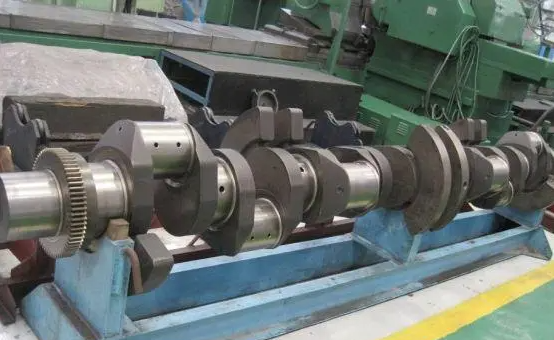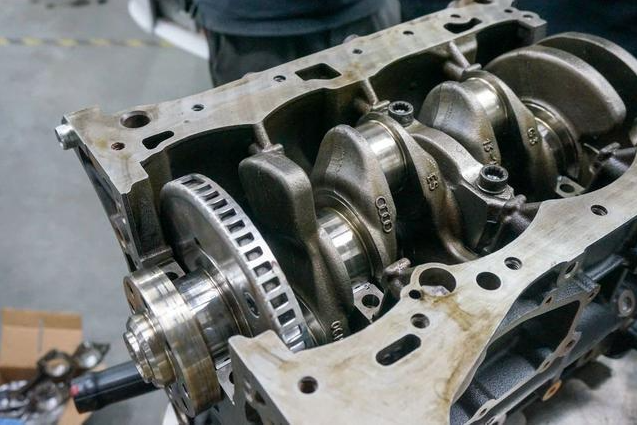Understanding the operations of a car engine is an intriguing exploration of mechanical engineering. At the heart of these operations, a component that plays a critical role in driving the car is the crankshaft. Its key function might not be immediately evident to the untrained eye, but it remains one of the most vital parts of any engine. This article aims to demystify the role of the crankshaft and explain how it contributes to the functionality of a car.
The engine is composed of numerous interconnected parts, and the crankshaft is one of the most crucial ones. Essentially, the crankshaft transforms the linear motion of the pistons into rotational motion. This process is vital for the movement of the vehicle, as it’s this rotational motion that eventually turns the car’s wheels.
The power stroke phase in the engine cycle ignites the fuel-air mixture, forcing the piston down. The piston is connected to the crankshaft through a connecting rod. When the piston moves, it drives the connecting rod, which in turn rotates the crankshaft. It’s noteworthy that this transfer of power is the basic operation behind a car’s mobility.
The design of the crankshaft is quite sophisticated. The crankshaft has several “crank throws” or “journals”, which are offset from the axis of the crankshaft. These are connected to the connecting rods of the pistons. As the pistons move up and down, these journals rotate, creating the rotational movement. It’s this ingenious mechanical design that ensures smooth operation and power transfer within the engine.
Balancing is another crucial aspect of crankshaft operation. To avoid significant vibrations and ensure smooth engine operation, the crankshaft needs to be perfectly balanced. This involves placing counterweights opposite the crank throws. The balance maintained by these counterweights helps to suppress the vibrations caused by the pistons’ movement.
In addition, the crankshaft also drives the vehicle’s accessories. It sends power to the accessories belt, which in turn drives components like the alternator, power steering pump, air conditioning compressor, and sometimes the water pump. Hence, the crankshaft is not only critical for turning the wheels but also for powering other essential components in the car.
Finally, it’s worth mentioning that the durability and strength of the crankshaft are essential for engine longevity. Crankshafts are made from robust materials like forged steel or cast iron, which can withstand extreme forces and high rotational speeds without breaking or deforming.
In conclusion, the crankshaft’s role in a car is indispensable. It facilitates the conversion of linear motion into rotational motion, enables the movement of the car, powers essential components, and contributes to the smooth operation and balance of the engine. Through its complex design and robust materials, the crankshaft underscores the sophisticated engineering behind a car’s mobility.
Table of Contents
- The Fundamental Role of the Crankshaft
- Mechanical Design of the Crankshaft
- Balancing: A Key Aspect of Crankshaft Operation
- Crankshaft and Vehicle’s Accessories
- Material and Durability of Crankshafts
- Crankshaft: The Indispensable Component
The Fundamental Role of the Crankshaft
Understanding the function of the crankshaft begins with recognizing its fundamental role. As the key part of the engine, the crankshaft is responsible for transforming the linear motion of the pistons into rotational motion. This conversion is imperative for the vehicle’s movement, as the rotational motion directly results in the rotation of the car’s wheels.
Mechanical Design of the Crankshaft
The crankshaft’s function is heavily dependent on its design. The component has several offset “crank throws” or “journals“, which connect to the pistons’ connecting rods. When the pistons move up and down, these journals rotate, creating the rotational motion necessary for the engine’s operation.
Balancing: A Key Aspect of Crankshaft Operation
To prevent significant vibrations and ensure the smooth operation of the engine, crankshafts need to be perfectly balanced. This is achieved through the strategic placement of counterweights opposite the crank throws. The balance maintained by these counterweights suppresses the vibrations caused by the movement of the pistons.
Crankshaft and Vehicle’s Accessories
The crankshaft doesn’t only facilitate movement; it also contributes to powering the car’s accessories. The crankshaft sends power to the accessories belt, which then drives components like the alternator, power steering pump, air conditioning compressor, and sometimes the water pump.
Material and Durability of Crankshafts
The longevity of an engine relies heavily on the durability and strength of the crankshaft. Built to withstand extreme forces and high rotational speeds, crankshafts are typically made from sturdy materials like forged steel or cast iron, thus ensuring they do not break or deform easily.
Crankshaft: The Indispensable Component
The crankshaft’s function is crucial for a car’s operation. It facilitates the conversion of linear motion into rotational motion, drives essential components, and contributes to the smooth operation and balance of the engine. Its complex design and robust materials are a testament to the sophisticated engineering that goes into building a car.